Widely shared views
, Dresden
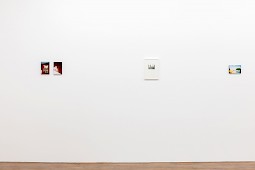
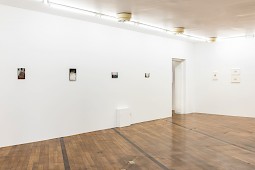
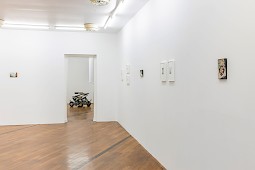




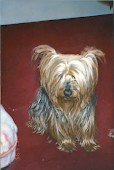

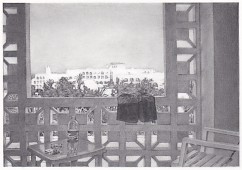
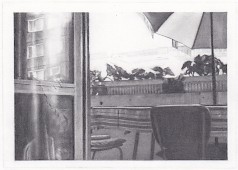
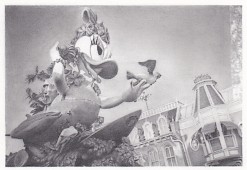


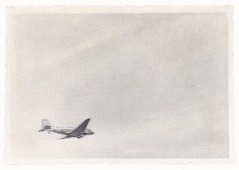
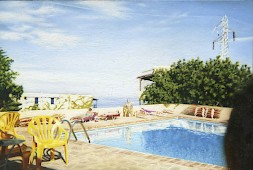
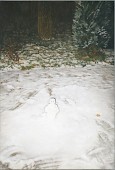

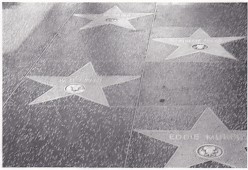
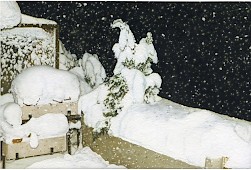
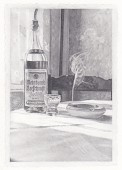
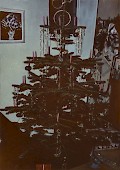


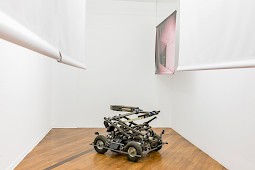
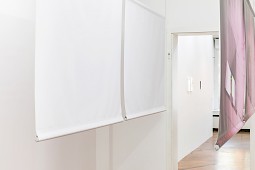
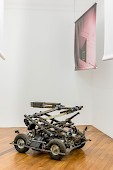


We are very pleased to present the exhibition "widely shared views", the first solo exhibition of the Dresden artist Johanna Rüggen at the Galerie Gebr. Lehmann.
If you browse through private photo albums, you will find there, stored between tracing paper, familiar scenes of homely happiness and evidence of the place of longing you have reached. The biographical moments developed on photographic paper serve, in addition to personal memory and family representation, also self-assurance (I was here / We saw that etc.). It is obvious that it is often the beautiful events that are preserved. It doesn‘t matter whether the photo is creased, rubbed or has traces of use. The picture itself has meaning.
Even if these moments of self-presentation are of a private nature, recurring motifs and conventions of image practice crystallize across generations. Consciously or unconsciously, motifs of holidays, vacations, pets or the particularly beautifully grown houseplant are always picked up like the one and thus entered into the common memory - they become widely shared views.
Johanna Rüggen:
"View" is equally translatable as opinion and outlook. Both terms are also ambiguous in German. A view can mean a vista from the balcony or from the window, or the prospect of something that could happen in the future. A view can be an opinion, but also a photographic image, which should give an impression of a place or an object.
If photographic images of places, objects and events - or even just of something perceived as an event - are created in private , the results have until recently still reliably ended up in photo albums. The motifs are so similar that the idea is obvious that even the so documented lives behind the albums must be quite similar. Apparently visible is always the same, always a little different, a thousand variations of the same tradition. Life, which should not be led like that of one's own parents, is illustrated with the self-decorated Christmas tree and the festively laid table. The main changes are in the storage media: unsorted folders are collected on hard disks, the pet is uploaded to YouTube, the homemade cake to Instagram.
Picutral construction, colourfulness and composition do not play a significant role in these often fast, in some respects unfocused shots. These direct shots, which are determined by the reality of those who pressed the release, are transferred by Johanna Rüggen in drawings and paintings. Here the process slows down, the photo is seen and treated as a whole. Processing errors, blurring, random backgrounds and bleeds become relevant, everything becomes intentional. In her small-format, partially original format works, which retain the characteristics of the snapshots, she is interested in the effect of the photos and the motifs. By separating the motif from its context - the photo from the album, as it were - she manages a certain distance to the object. Does this relieve the picture of its meaning and allow the viewer to perceive it freely and independently? In two respects, Johanna Rüggen elevates something in her works to unique, which is commonly regarded as a mass product: The individual photograph as such, as well as exemplarily the motif, which stands for hundreds of its kind.
Wir freuen uns sehr, mit der Ausstellung "widely shared views“ die erste Einzelausstellung der Dresdner Künstlerin Johanna Rüggen in der Galerie Gebr. Lehmann präsentieren zu können.
Durchblättert man private Fotoalben finden sich dort, zwischen Transparentpapier aufbewahrt, vertraute Szenen heimeligen Glücks und Belege erreichter Sehnsuchtsorte. Die auf Fotopapier entwickelten biografischen Momente, dienen, nebst der persönlichen Erinnerung und familiären Darstellung, auch der Selbstvergewisserung (Ich war hier/ Das haben wir gesehen etc.). Ins Auge fällt, dass es oft die schönen Ereignisse sind, die aufbewahrt werden. Dabei spielt es keine Rolle, ob das Foto geknickt, berieben ist oder Gebrauchsspuren trägt. Das Bild an sich hat Bedeutung.
Auch wenn diese Momente der Selbstinszenierung privater Natur sind, kristallisieren sich generationsübergreifend immer wiederkehrende Motive und Konventionen der Bildpraxis heraus. Bewusst oder unbewusst werden Motive von Feiertagen, Urlauben, Haustieren oder die besonders schön gewachsene Zimmerpflanze immer wieder aufgegriffen und erhalten so Einzug in das gemeinsame Gedächtnis- sie werden zu widely shared views, zu weit verbreiteten Ansichten.
Johanna Rüggen:
„View“ ist gleichermaßen übersetzbar als Ansicht und Aussicht. Beide Begriffe sind auch im Deut-schen mehrdeutig. Eine Aussicht kann einen Ausblick meinen, vom Balkon oder aus dem Fenster, oder die Aussicht auf etwas, dass sich in Zukunft ereignen könnte. Eine Ansicht kann eine Meinung sein, aber auch ein fotografisches Abbild, das einen Eindruck von einem Ort oder einem Gegenstand vermitteln soll.
Entstehen fotografische Abbilder von Orten, Gegenständen und Ereignissen–oder auch nur von et-was als Ereignis empfundenem–im Privaten, landeten die Ergebnisse bis vor kurzem noch verlässlich in Fotoalben. Die Motive ähneln sich so sehr, dass der Gedanke naheliegt, auch die so dokumentierten Leben hinter den Alben müssten einander recht gleich sein. Sichtbar ist scheinbar immer das Gleiche, immer etwas anders, tausend Variationen derselben Tradition. Das Leben, das bloß nicht geführt werden sollte wie das der eigenen Eltern, bebildert sich bei so manchem dann doch mit dem selbst geschmückten Weihnachtsbaum und dem festlich gedeckten Tisch. Deutlich ändern sich in erster Linie die Speichermedien: auf Festplatten sammeln sich unsortierte Ordner, das Haustier wird bei Youtube hochgeladen, der selbstgebackene Kuchen bei Instagram.
Bildaufbau, Farbigkeit und Komposition spielen bei diesen oftmals schnellen, in gewisser Hinsicht unkonzentrier-ten Aufnahmen keine signifikante Rolle. Diese unmittelbaren Aufnahmen, die bestimmt sind von der Wirklichkeitssicht derer, die auf den Auslöser drückten, werden von Johanna Rüggen in Zeichnungen und Malereien übertragen. Hier verlangsamt sich der Prozess, das Foto wird als Ganzes gesehen und behandelt. Entwick-lungsfehler, Unschärfe, zufällige Hintergründe und An¬schnitte werden relevant, alles wird zur Absicht. In ihren kleinformatigen, teilweise formatgetreuen Werken, die die Charakteristika der Schnappschüsse beibehalten, geht es ihr um die Wirkung der Fotos und der Motive. Durch die Herauslösung des Motivs aus seinem Kontext - gleichsam des Fotos aus dem Album - gelingt ihr eine gewisse Distanz zum Objekt. Wird damit das Bild von seiner Bedeutung entlastet und somit vom Betrachter wieder frei und unabhängig wahrgenommen werden? In doppelter Hinsicht erhebt Johanna Rüggen in ihren Arbeiten etwas zu einem Unikat, das sich gemeinhin als Massenware darstellt: Die einzelne Fotografie als solche, wie auch exemplarisch das Motiv, welches für hunderte seiner Art steht.